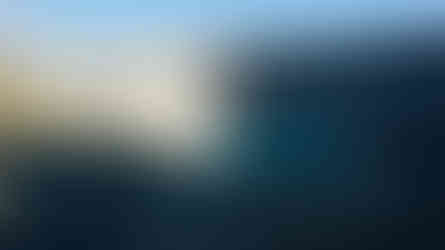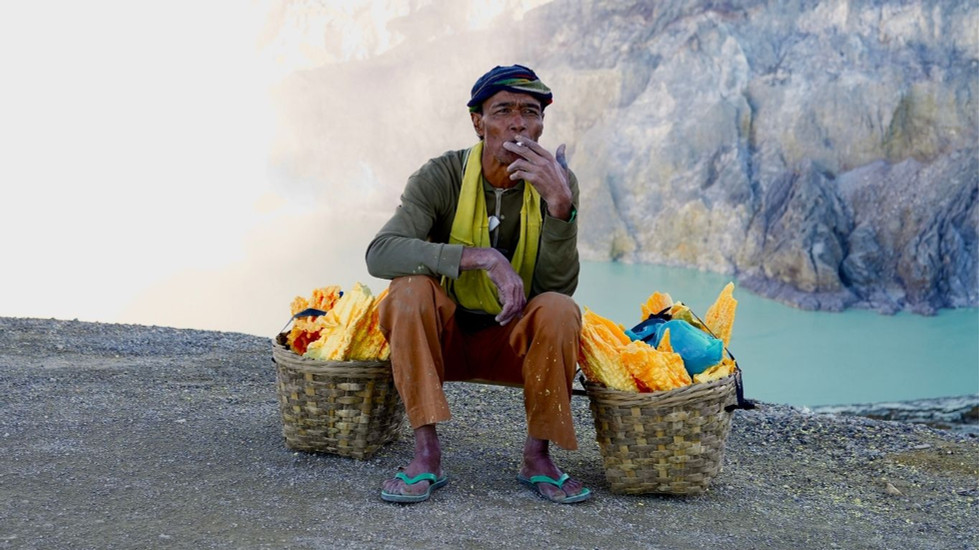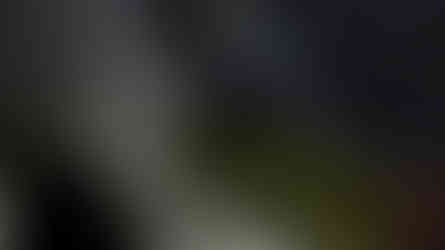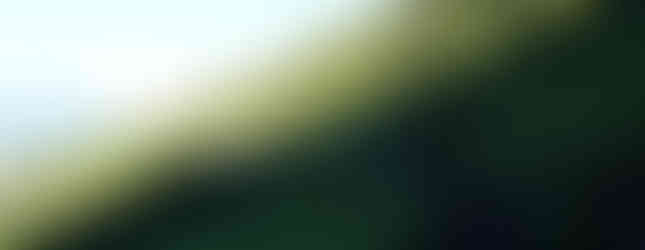Chasing Blue Fire & Sulphur at Mount Ijen, Indonesia
- Humble Traveller
- Sep 7, 2025
- 7 min read
On my most recent trip to Indonesia, I set my sights on witnessing a geological marvel: an active volcano with a turquoise-blue acidic crater lake, coupled with rare blue flames produced by the combustion of sulphuric gases deep within the mountain. Yes - you heard that correctly... I'm talking about the volcanic Mount Ijen in East Java. This is something most people might only read about before opting instead for a week or two at a beach resort, lounging on the sand and sipping cocktails. Not me, though. Ever since my school days, volcanoes have fascinated me—those telltale signs of our planet’s inner workings, spewing out liquid rock that eventually forms the lands we inhabit.
It’s just after midnight, and my alarm has gone off. I crawl out of bed, wash my face, and quickly check my backpack (head torch, extra layer, rain jacket, batteries for the drone). I slip on my hiking shoes and open the door to the little donga. It’s 11°C on the mountain tonight, a massive contrast to the 30°C at sea level. I hadn’t really prepared for the temperature drop, so I throw on an extra layer and use my rain jacket as a windbreaker.
I start up the scooter and head toward the ticket office. As I get closer, I notice a lot of activity. There are plenty of international travellers and locals gathered around little open-air restaurants. (It reminds me of the chalets in ski towns of the Swiss Alps, though obviously these are much less picturesque.) Everyone seems in good spirits, sipping coffee, tea, and hot Milo before the hike. There are also places to rent warm, weatherproof clothes, along with gas masks—an essential piece of gear for what was about to come. I managed to rent two (one for myself and one for Neth, my travel companion from Cambodia) for 60K, about $6 AUD.
The line for the ticket office was long, so we split up: Neth waited in line for the entrance tickets. The tickets cost 150K ($15 AUD) per person and require a medical clearance certificate, which must be obtained prior to entering Ijen. We arranged the certificates the day before while staying in Banyuwangi. Medical certificates can be obtained at the hospital or at clinics in that area for $3–7 AUD, and we paid $6 each for ours.
The entrance gate for Mt Ijen opens up at 2AM.
We set off shortly after 2 AM and took our time making our way up. The distance and incline were more than we had anticipated, and neither Neth nor I had really prepared for this impromptu trip. I was carrying a bag with about 3 litres of water (way too much, as I later found out, since there are small stalls at various points along the hike), a handheld camera, drone, and a few extra clothing items, and I find it pretty tough going.
On the way up, we’re constantly approached by locals pushing makeshift seated carts, offering us a lift up the mountain. They’re always calling out, 'Taxi, you want taxi, brother?' or 'Ferrari, Lamborghini, you want taxi, bro?' They can see we’re panting and look like we are about to give in.

Every now and then, we see a Chinese tourist being pushed and pulled up the mountain, wearing a sleeping mask as if to suggest a 'wake me up when we get there' mentality. The taxi drivers, meanwhile, are pushing and pulling the carts with cigarettes hanging from their mouths, completely unfazed by the effort.
We reached the top of the ridge around 4 AM, with the occasional whiff of rotten eggs—hints of what was to come. The first few times, I’d look ahead, wondering if it was just me being downwind of a tourist with some flatulence.
At the top of the ridge, there was a bottleneck heading down into the crater. That’s when we both realised just how far down we would have to climb to see the blue flames. It was also a 'wow' moment when we saw how many people had come before us—there were hundreds of lights twisting and turning down the mountain goat tracks into the volcano’s crater.

Slowly making our way down into the depths, we pass constant flickers of head torches, the sound of light chatter, and the occasional slip or trip of a weary tourist. Some hikers are already on their way back up to the crater rim to catch the sunrise. We can already tell, from the speed at which we’re descending and how crowded it is, that we’ll likely miss the sunrise at the crater rim.
As I ponder the thought of missing the sunrise, the wind direction briefly changes. Our visibility with the head torches disappear and…
I suddenly can’t breath! When I try to inhale it’s like being kicked in the chest and oxygen is scarce.
Panic immediately sets in, and I scramble for my mask, casually wrapped around my arm, jamming it against my face upside down. That’s when I realised I hadn’t even tried it on when I rented it from the store. I rush to get the elastic straps over my head and secure it in place. I’m feeling light-headed—my adrenaline’s pumping, my heart rate has skyrocketed, and my eyes are burning. I see that Neth is also scrambling with her mask, so I rush over to help her too. I’m fumbling with the straps and notice my legs are like jelly, shaking with terror. Then I hear what I believe was a tour guide’s voice, telling everyone to remain calm, not to panic, that we’re okay, and to put the face masks on. It seems there were others behind me sharing the same experience. After some deep panting through the mask, I realise that we might just be okay. The wind direction changed again, and just like that - it was as if nothing had happened.
Not game enough to remove the mask just yet, we continue descending into the void. Suddenly, flickering lights appear, dancing off the surrounding rock faces. We climb into a massive open space that’s now packed with a few hundred tourists, all trying to take photos, videos, and selfies with a narrow stream of blue fire spewing from a small rockface crevice.

On one hand, I’m astonished to witness naturally occurring blue flames; on the other, I’m equally stunned by the sheer number of people who’ve gotten up in the dead of night to climb into the crater of an active volcano. Some are squatting on the yellow, sulphurous rock, edging ever closer to the flames. Occasionally, I see couples emerging from thick plumes of sulphur dioxide, their eyes bloodshot and weeping from overexposure—no longer able to take photos.
I watch, fascinated, by how far people are willing to go for the perfect shot.

After taking some photos of our own, Neth and I decide to begin our ascent out of the crater, knowing that as soon as sunrise begins, there will be a stampede of a couple hundred tourists all trying to climb out at once.
We make it about a third of the way up. The morning light is brightening by the minute, and we’re constantly stopping to look back at the column of sulphur gas and the vividly blue acidic lake slowly coming into view below us. We’re also now seeing the true scale of the crater we’re in, along with the rough and rugged landscape that had gone unnoticed during our descent in the dark.
There are boulder-sized rocks - some as big as buses - scattered around, some with smooth, flat edges, others hollowed out like blocks of cheese. The crater walls have ridges large enough to drive through, and there are platforms of rock that look as if they floated on a sea of lava - one of which I launched the drone from.

On the trail, we’re passed a couple of times by sulphur miners - shirtless, weathered, and carrying heavy baskets filled with jagged sulphur stalactites on their shoulders. Each of them has a cigarette dangling from their mouth, seemingly unfazed by the choking fumes around them. Their movements are steady and silent, a stark contrast to the tourists, and a sobering reminder of the daily reality here. I’m later informed that many of the miners don’t wear masks at all - preferring the cigarette smoke to the sulphur fumes. The average life expectancy for these men is said to be in the mid-30s.
I’m struck by the sheer beauty of what I’m seeing, but I can’t fully process it. It’s a bizarre feeling—like my mind can’t quite catch up to the scale, contrast, and strangeness of the landscape around me. Climbing up and out of the crater, we’re hit with a brisk, fresh air - a welcome breeze after the stagnant, sulphurous atmosphere below. As the sun rises higher, we’re treated to breathtaking views from the top - jagged ridgelines, the glowing crater lake, and the dramatic plume of gas all bathed in golden morning light.
We take some photos from the rim, pose with the Mt Ijen sign, and then begin our descent.
My bag feels heavier with every step, my knees and back are aching, and I’ve tweaked a muscle in my groin that causes me to do an involuntary, spasmodic leap whenever it’s suddenly strained. More “taxi” drivers are waiting along the trail, eager for our business, but we’re determined to complete this experience on our own.
We finally reach the bottom, share some hugs and high-fives, snap a few photos at the gate, return our masks, and head back to our accommodation for breakfast. As we eat, we talk about the experience - it already feels like a vivid dream, blurred by exhaustion and lack of sleep.
“Can you believe we were actually inside the crater of an active volcano last night?” I say to Neth, sipping a cup of coffee and staring at another volcano across the valley.
What an experience - and one I’m glad to share with you.
Thanks for reading my blog post! I hope you have come away with some useful travel insights and are inspired to see the blue flames of Mt Ijen yourself!
- The Humble Traveller


























Comments